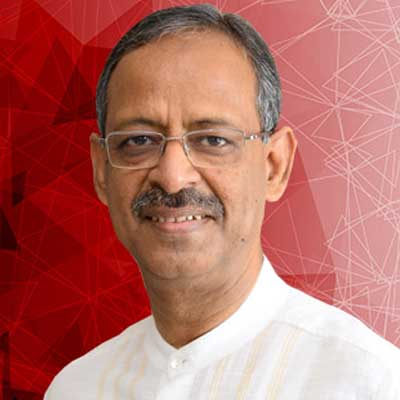Prevailing opinion across our country is that “Sarkar toh kuch nahi karti” (the government does nothing). More than seven decades of independence later, as a country we still mistrust the government and expect very little to nothing from the “system”. While there are valid reasons for this disillusionment, this general sense of apathy prevents us from noticing, let alone appreciating, when the same system actually delivers.On Good Governance Day, the Government of India released the Citizen Centric Governance Sector Ranking for the year 2021. Haryana topped this list. In the normal course of events this would come as a surprise. But look deeper and one will realize that Haryana began sowing the seeds for bold reforms way back in 2017 and therefore this plaudit is truly well deserved. How did this happen?Scheme and service delivery is one of the most common reasons for citizen-government interaction and strife. Through the Antyodaya Saral system, Government of Haryana’s transformative public service program, the state has successfully tried to fix precisely this.The Government of Haryana offers more than 600 schemes and services to citizens across more than 35 departments. Unfortunately, over the years, delivery systems had become inefficient and opaque, making the entire experience of dealing with the government a nightmare for citizens. Some specific challenges that citizens in Haryana faced include lack of awareness about schemes/services and eligibility criteria, lack of knowledge about where to apply for which scheme/service given a variety of government touch points, complex application processes and document requirements, and inevitable dependence on middlemen and touts. The situation was no better for government officials. They used to get applications through multiple channels in varying formats, had limited or no visibility on applications under process or pendency, and most of their time used to go in avoidable public dealing.In 2017, Digital Haryana Cell (DHC)—a 4-member committed team from Samagra, a mission-driven governance consulting firm, led by its visionary Founder and CEO Gaurav Goyal—working with the Chief Minister’s Office (CMO), conceptualized Antyodaya Saral after extensive discussions. The Chief Minister’s vision was to eliminate (or minimize to the extent possible) the root cause of citizen harassment and petty corruption, i.e., the direct interface between citizens and various government departments for scheme and service delivery.Anchored in the CMO, the Digital Haryana Cell worked closely with National Informatics Centre (NIC) Govt of India, NIC Govt of Haryana, officials from 35+ departments and 22 districts to bring all 600+ government schemes and services online to the Antyodaya Saral platform. End-to-end processing of applications in an online, paperless manner and process re-engineering to make procedures simple and minimalistic has completely changed the citizen’s experience of availing schemes and services. Today, citizenscan apply for all schemes and services online, track the status of the application online as well as receive proactive SMSs from the government on the status. The state has mandated that all services should be delivered within Right To Service (RTS) timelines, therefore any application that is not processed within that time period is marked as pending. After the application has been processed, citizens also get an IVRS call to share feedback on their experience of using the Saral system. This entire experience is a stark contrast to the time when even information on which government office has to be visited for which scheme/service was hard to find.Antyodaya Saral has also made the lives of government officials easier. Applications now come in from one source in one format ratherthan from multiple sources. Officialscan spend maximum time on processing applications rather than public dealing. There is now visibility at the state, district and departmental level on the status of each and every application at different stages of processing.To ensure equitable access to those who cannot apply through the online platform, the government also revamped or established 117 Saral Kendras, a single physical touchpoint for citizens at District Headquarter, Subdivision and Tehsil levels, and ensured the availability of all schemes and services across 6000+ Common Service Centres (CSCs) in the state. Each Saral Kendra has a standardized citizen-centric layout adhering to 60+ quality parameters such as token system, adequate waiting area, clean washrooms etc. The village-level entrepreneurs running 6,000+ CSCs were also trained on the Antyodaya Saral platform.The impact of this complete revamp of scheme and service delivery in Haryana has been far-reaching. And this can be validated by data. Since December 2018, 150 of the highest footfall schemes and services have witnessed a 15% increase in number of applications; 40 out of these have received 3x applications and 16 have received 2x applications. Out of 4.6 crore applications, 85% have been closed within RTS timelines.The systemic impact of this reform is also evident in data. Out of total scheme and service applications received by the government, 36% now directly come online, without assistance from CSCs or Kendras. In addition, the role of touts has significantly reduced. Online processing has been enabled for 100% of schemes and services, and there is no citizen-government interface required for more than 300 of them. Every month, 5,00,000+ applications are received through the Antyodaya Saral platform, 15 lakh+ update SMSs are sent to citizens, and 4,000+ grievances are disposed, significantly cutting down the public dealing time for officials. Based on more than 1 crore citizen feedback calls, Saral has received a 4.3 on 5 average rating, highlighting high levels of citizen satisfaction.When the Covid-19 pandemic hit, Saral enabled services like movement pass and reopening of industrial establishments within a day, with verifiable QR Code and real-time updates to citizens. It is now also being leveraged by the RTS Commission to penalize non-performing officials. In essence, the investment made by the state government in this critical reform in the past, helped it navigate an unplanned eventuality like Covid better and also leverage the system to further institutionalize accountability. Building on a strong foundation, a dedicated Saral Cell comprising NIC officials, manages this mammoth system today. Their motivation to further strengthen it received a fillip when Antyodaya Saral won an award from the President of India for “Excellence in Digital Governance”.The story of Antyodaya Saral is a story of multiple actors—the state government, district and block administrations, the private sector, consulting and technology professionals—coming together to translate a bold vision for change into reality. They have made-it-happen. They have proved that it can be done, The result is a system which has tangibly improved the quality of life of citizens and benefits the poorest of the poor.The author is the chairman, Editorial Board of Lokmat Media and former member of Rajya SabhaProfile Author: Anil Swarup has served as the head of the Project Monitoring Group, which is currently under the Prime Minister’s Office. He has also served as Secretary, Ministry of Coal, and Secretary, Ministry of School Education. Source:The Daily Guardian




















